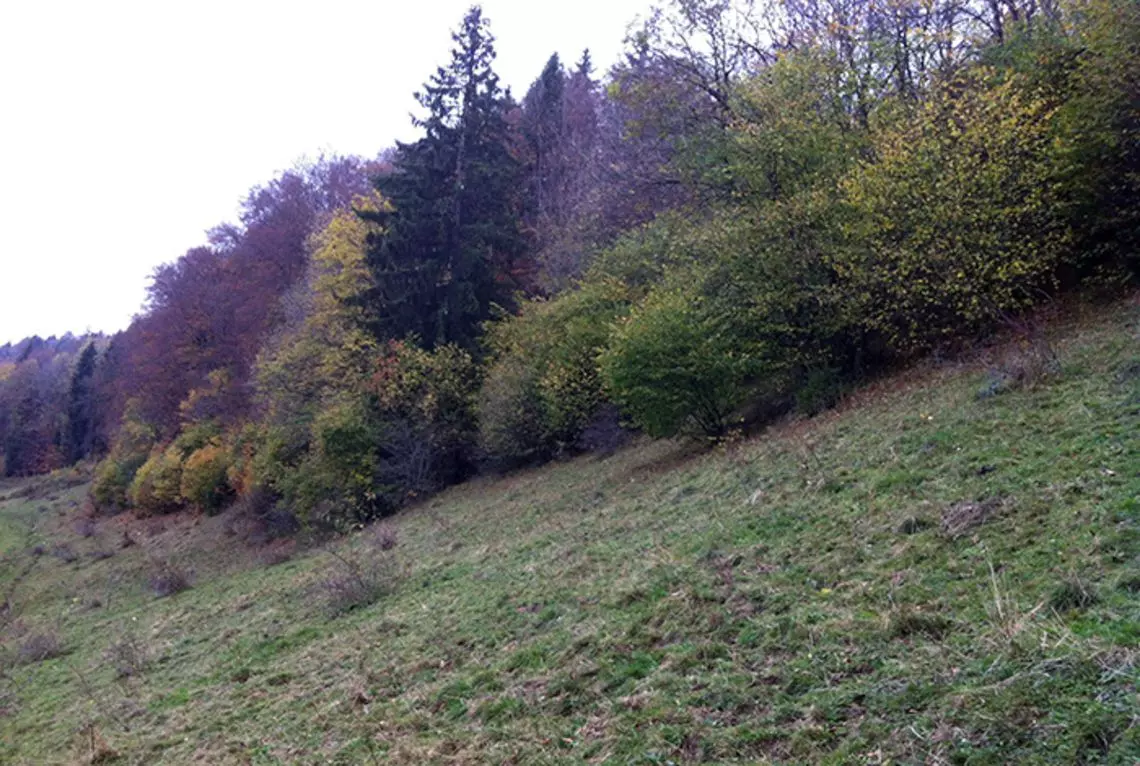Projects at the research group Vegetation Ecology
Reference projects
Valorisation of Swiss vegetation-plot data

The pilot project has three work packages:
- Pilot study for a modern data-driven classification of the grassland alliances of Switzerland
- Developing tools and workflows for a comprehensive Swiss National Vegetation-Plot Database in cooperation with Info Flora and embedded in the European Vegetation Archive (EVA) and the global database sPlot
- Contributions to the development of the Ecological Indicator Values of Europe (EIVE)
Funding: ZHAW
Project duration: 2018 – 2019
Ecological improvement of forest edges

The Swiss Plateau alone houses 25,500 km of forest edge; like all transitional biotopes, these areas can be extremely species-diverse and ecologically valuable, but their potential has been greatly under-utilised to date. The aim of the projects is to create practical aids and GIS priviosiums tailored to the needs of the cantons for the ecological upgrading of forest edges.
Project partner: FOEN, cantons
Client: FOEN, cantons
Project duration: 2020
More information: Project website
Conservation biology of glacial erratic flora

Certain species of ferns, mosses and lichens are only found on glacial erratics in the Swiss Plateau and Jura, and this biogeographically unique flora is at risk of extinction. The aim of this project is to find ways of preventing this loss, since the glacial erratics and their unique flora are a valuable natural legacy of the ice ages.
Project partner: Pro Natura und WSL
Client: Dissertation
Project duration: 2015 – 2020
More information: Project website
All projects
-
VegChangeCH – A comprehensive picture of anthropogenic changes in the vegetation of Switzerland
Preparatory Phase Proposal for the Project "VegChangeCH – A comprehensive picture of anthropogenic changes in the vegetation of Switzerland"
-
Square Foot Project
The grasslands of Central Europe are habitats of great ecological and economic importance whose biodiversity has declined drastically due to human influence. Using a globally unique dataset of historical vegetation records, the Square Foot Project aims to quantify this transformation over more than a century and ...
-
More than hay
The general aim of this and future projects is to consolidate the knowledge on the application of direct greening methods on green roofs namely to adapt typical ecological restoration procedures to urban ecological design and praxis. Specific aims of this project are: 1) to set up of a first inventory with the old, ...
-
Mobile tool for the evaluation of forest edges - Digital Transformation
The tried and tested forest edge key (Krüsi et al. 2017) is suitable for recording the initial condition and later monitoring the success of forest edge enhancements, as it provides reproducible results and is easy to use (Fuhrer et al. submitted). For this reason, this forest edge key is to be further developed ...
-
Conservation biology of cryptogam communities on erratic boulders in the Swiss Plateau and Jura Mountains
Pleistocene erratic boulders sometimes harbour exclusive rock-dwelling cryptogams (bryophytes, ferns and lichens) and thereby contribute to the biodiversity of landscapes. This is especially the case where erratic boulders constitute the only natural rock habitats or where the chemical composition of boulders ...
-
Digital Grass Identification
The project was accompanied by a bachelor thesis dealing with the user-friendliness of the app. A web app serves as a preliminary study for the creation of the native app. The web app is already usable on any smartphone. Grasses can be indentified based on user-entered characteristics. In the project the digital ...
-
Clonal diversity of Brachypodium pinnatum in Swiss National Park